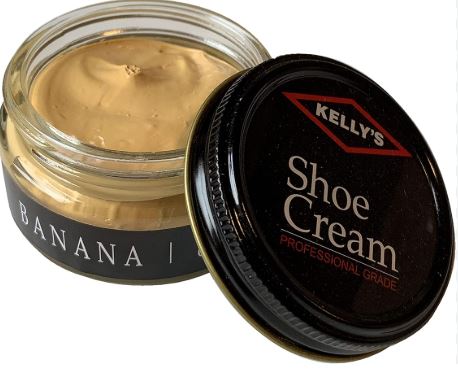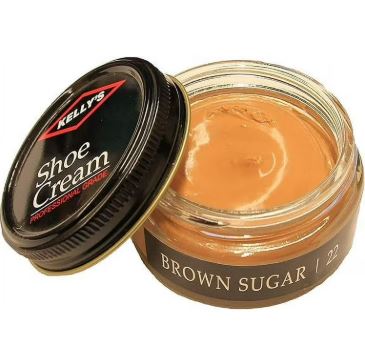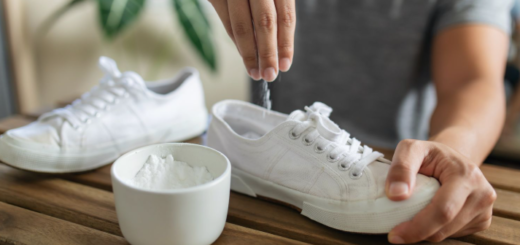Choosing the Best Polish for Leather Shoes: A Comprehensive Guide
Taking care of leather shoes involves more than just keeping them clean; it requires selecting the right type of polish to maintain their condition and enhance their appearance. Different products serve different purposes, and the polish you use can either preserve or prematurely age your shoes. Three of the most common types of polish—liquid, wax, and cream—each offer unique characteristics that cater to specific needs. Knowing how each works will help you make an informed decision about which is best for your leather footwear.
Liquid Polish: Fast Results with Trade-Offs

For those who value speed and ease, liquid shoe polish often seems like the perfect choice. It typically comes with an integrated sponge applicator, allowing you to quickly spread the product across the surface of your shoes. It dries in moments and leaves a glossy finish, making it appealing for quick touch-ups before a meeting or event.
Despite its user-friendly application, liquid polish isn’t the best solution for deep leather care. Many liquid polishes contain alcohol and synthetic solvents, which can gradually strip the leather of its essential oils. Over time, this can lead to a dry, brittle texture and even cracking in severe cases. While it may give the illusion of care through its shiny finish, the long-term consequences could compromise the integrity of the leather.
This makes liquid polish better suited for casual or inexpensive shoes rather than premium pairs that demand more thorough upkeep. It’s best used occasionally, when convenience outweighs the need for restoration or deep conditioning.
Wax Polish: A Traditional Method with Long-Term Benefits

Wax-based polish has long been favored by shoe enthusiasts who prefer to maintain their footwear with care and attention. This type of polish requires a more involved process: cleaning the shoes thoroughly, applying a small amount of wax with a cloth or applicator, and then buffing the leather to achieve a high-gloss finish.
What sets wax polish apart is its dual function—it not only improves appearance but also acts as a protective seal. The wax forms a thin layer that helps repel moisture, dirt, and other contaminants, which is especially beneficial in wet or dusty environments. It also enhances the depth of the leather’s color, creating a richer and more luxurious look.
More importantly, wax polish contributes to the health of the leather. It often contains natural oils and ingredients that keep the leather from drying out, allowing it to maintain flexibility and resilience. Although the application process can be time-consuming, the results are worth the effort for those who want to extend the life of their shoes.
Cream Polish: Deep Conditioning for Luxurious Leather

Among the most effective products for leather shoe maintenance is cream polish. While less commonly used than its wax or liquid counterparts, cream polish excels in both care and appearance. It penetrates the leather rather than just sitting on the surface, offering deep nourishment that restores vitality to tired, dry shoes.
Cream polish typically contains high-quality natural components like beeswax, lanolin, or carnauba wax. These ingredients help preserve the leather’s natural oils and maintain its softness. In addition to conditioning, cream polish slightly enhances the color of the shoe, making faded areas appear more uniform and vibrant.
Though cream polish usually doesn’t produce as glossy a finish as wax, its main strength lies in restoration. It’s particularly beneficial for aging shoes that need revitalization or for expensive leather footwear that requires careful preservation. Cream polish may cost more and take longer to apply, but its payoff in shoe longevity and suppleness makes it the go-to for dedicated leather caretakers.
Comparing the Polishes: What Sets Each Apart
When evaluating the three types of polish, it’s important to look beyond surface shine. While all can improve the appearance of leather to some extent, their underlying effects differ considerably. Liquid polish offers speed and gloss but lacks in nourishment and can degrade the leather over time. Wax polish delivers shine and protection while also contributing to leather health. Cream polish may not offer the same visual luster but provides unmatched conditioning benefits that preserve the quality of the leather long-term.
Your choice should depend on how often you wear your shoes, the environments they’re exposed to, and how much effort you’re willing to put into maintenance. For someone constantly on the go, a quick application of liquid polish might be enough. If you wear fine leather shoes regularly and want them to last for years, wax or cream polish is likely the better route.
Situational Use: Matching Polish Type with Occasion
Choosing the right polish isn’t just about the product—it’s also about when and how you use it. For example, if you’re traveling or preparing for a last-minute meeting, liquid polish provides a swift solution. It’s handy to keep a bottle in your office or travel bag for emergencies.
For a weekend at home or a planned maintenance session, wax polish allows you to give your shoes the attention they deserve. It’s ideal before events, interviews, or outings where you want your footwear to look sharp and last longer against exposure.
Cream polish is best used as part of a monthly or bi-monthly deep care routine. It serves as a leather treatment, much like a conditioner for your skin or hair. Applying cream polish every few weeks can prevent your leather shoes from deteriorating, especially during seasonal transitions or after heavy wear.
Application Tips: Getting the Most Out of Your Polish
Whichever type of polish you choose, how you apply it can greatly affect the results. Always start with clean, dry shoes to ensure the polish adheres well and doesn’t trap dirt or dust. Use separate brushes or cloths for different types of polish to avoid contamination, especially between cream and wax varieties.
Allow the product to dry before buffing and use circular motions to spread polish evenly. For wax polish, gentle heat from your hands or a hairdryer can soften the product for smoother application. If you’re using cream polish, allow time for the leather to absorb the ingredients before adding any additional layers.
Using a horsehair brush for buffing enhances the shine and helps distribute the polish evenly without damaging the leather. Don’t forget to condition your shoes with leather conditioner occasionally, particularly if you’re using wax or liquid polish regularly.
Cost Versus Care: Weighing Value Over Time
While cream and wax polishes are often more expensive than liquid ones, they provide far better returns in the long term. Liquid polish might make shoes look great for a day, but wax and cream polishes ensure they continue looking good for years. Consider your shoe collection and how much you’re willing to invest in maintaining it when deciding which product to purchase.
Budget-conscious consumers may gravitate toward liquid polish due to its affordability and accessibility, but the damage it can cause over time could lead to more frequent shoe replacements. Spending more upfront on quality polish pays off by preserving expensive footwear.
Conclusion: Tailor Your Polish to Your Shoe Care Goals
Caring for leather shoes is an ongoing process, and the polish you choose should align with your overall maintenance goals. Liquid polish offers speed and convenience, suitable for quick fixes but not ideal for preservation. Wax polish strikes a balance between aesthetics and protection, making it a reliable choice for regular upkeep. Cream polish stands out for its deep conditioning effects, restoring leather from within and prolonging its life.
No single polish fits all situations, but understanding the strengths and weaknesses of each allows you to adapt your shoe care routine to your needs. With the right approach, your leather shoes can maintain their elegance, comfort, and durability for many years to come.
Frequently Asked Questions
What is the main purpose of polishing leather shoes?
Polishing helps maintain the leather’s appearance, condition, and durability while protecting it from damage.
How does liquid polish benefit leather shoes?
Liquid polish offers quick application and instant shine, ideal for on-the-go touch-ups or casual footwear.
What are the downsides of using liquid polish regularly?
Frequent use can dry out leather due to harsh chemicals, potentially leading to cracks and brittleness.
When should liquid polish be used?
It’s best used occasionally for fast results or emergencies, not for long-term shoe care.
What makes wax polish different from liquid polish?
Wax polish nourishes the leather, adds shine, and forms a protective barrier against moisture and dirt.
Why is wax polish recommended for regular maintenance?
It preserves leather health, enhances color depth, and provides resistance to environmental wear over time.
What role does cream polish play in leather care?
Cream polish deeply conditions and restores the leather while improving color and maintaining suppleness.

Is cream polish suitable for all types of leather shoes?
It’s especially effective for high-end or older shoes needing restoration, though it can benefit any leather.
How often should cream polish be applied?
Every few weeks as part of a deep care routine to keep leather soft, rich, and healthy.
Can you use multiple types of polish on the same shoes?
Yes, but they should be applied at different times and with clean tools to avoid residue mixing.
Which polish is best for long-term shoe preservation?
Cream polish is ideal for conditioning and longevity, while wax polish offers solid all-around protection.
Did You Know?
- Liquid shoe polish can actually accelerate leather aging if used too often, due to its alcohol-based formula stripping away natural oils.
- Cream polish not only conditions leather but can also subtly restore faded color, making old shoes look vibrant again.







